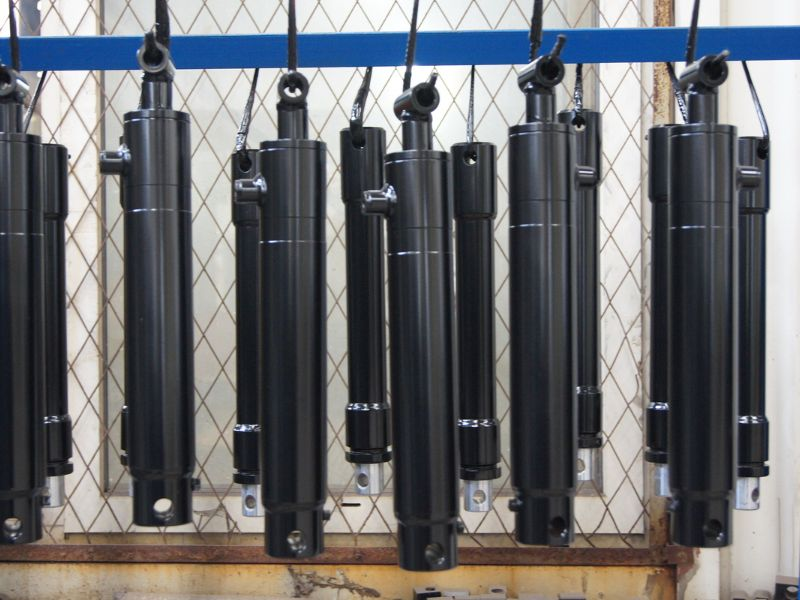How hydraulic cylinder components are stored has a profound impact on their performance and longevity, yet this crucial task is often overlooked. This guide clarifies the essentials of storing hydraulic cylinders, offering ways to maintain their robust performance. Let’s explore how to store hydraulic cylinders to ensure they are not only properly stored but also maintain optimal performance.
The performance of a hydraulic cylinder is influenced not only by its design and construction but also by its upkeep, particularly how it is stored. Proper storage conditions serve as a safeguard against wear and contamination, two major enemies of hydraulic systems. A cylinder left exposed to the elements or stored without proper care can suffer from internal corrosion, seal degradation, or rod pitting. These issues not only reduce the power and efficiency of the cylinder but also threaten the safety and consistency of the machinery they power.
In contrast, a cylinder that is stored with attention to detail can be expected to perform at its peak, responding with precision and reliability every time it is used. Understanding this critical relationship between storage and performance is the first step towards ensuring the longevity and reliability of these essential components.
For the optimal storage of hydraulic cylinders, it is critical to maintain a consistent temperature and low humidity levels. Temperature fluctuations can lead to condensation, which in turn causes rust formation. High humidity levels are also detrimental, as they can cause the degradation of seals and other critical components of the hydraulic cylinders. It is highly recommended to use climate-controlled storage environments to mitigate these risks.

Indoor storage is generally the preferred option for hydraulic cylinders, as it provides a controlled environment where humidity and temperature can be effectively managed. Indoor storage also offers protection against external elements such as rain, dust, and harmful UV exposure, which can contribute to the deterioration of the cylinders. In situations where outdoor storage is the only option, additional protective measures should be implemented. These may include the use of waterproof covers and ensuring that the cylinders are stored on raised platforms to protect them from direct contact with ground moisture and other potential sources of damage.
Designing an appropriate layout for storing hydraulic cylinders is crucial for ensuring easy access and minimizing potential damage. There should be adequate space between stored cylinders to prevent accidental impacts that could lead to damage. Cylinders should be stored horizontally on racks designed to distribute their weight evenly, which helps prevent the formation of pressure marks and potential warping. It is also essential to ensure that the storage area is free from any chemicals or substances that might cause corrosion. A clean, well-organized, and properly maintained storage environment is key to preserving the integrity of hydraulic cylinders during storage.
1.Custom Racks for Large or Uniquely Shaped Cylinders: For oversized or non-standard cylinders, standard racks might not provide adequate support. Custom-designed racks that accommodate their unique dimensions and weight distribution are essential to prevent warping or bending.
2.Climate-Controlled Environments: Cylinders made from specialized materials or those with sensitive components may require controlled environmental conditions. Maintaining specific temperature and humidity levels is crucial to prevent material degradation or component malfunction.
1.Support for Larger Cylinders: Larger hydraulic cylinders require robust support structures to prevent bending or structural stress. This might involve reinforced racks or supports placed at strategic points along the cylinder to evenly distribute weight.
2.Detailed Inspections for Smaller Cylinders: Smaller cylinders, often featuring intricate components, may require more frequent and detailed inspections. The risk of unnoticed damage or wear in smaller components is higher, necessitating closer scrutiny.
1.Inadequate Cleaning: Prior to storage, thorough cleaning is imperative. Residual dirt, fluids, or contaminants can lead to corrosion or damage over time. Ensuring cylinders are clean before storage is a simple yet effective preventative measure.
2.Improper Environmental Control: Neglecting the control of temperature and humidity in the storage area can lead to issues such as corrosion, seal degradation, or material brittleness. Regular monitoring and adjustments are necessary to maintain ideal conditions.
3.Neglecting Regular Inspections: Regular inspections play a crucial role in early problem detection and maintenance. Overlooking this can lead to minor issues developing into major faults, potentially leading to the failure of the cylinder when it’s put back into service.
Proper storage of hydraulic cylinders is not just about prolonging their lifespan; it’s also about ensuring their readiness and reliability for when they are needed most. By following these guidelines, you can ensure that your hydraulic cylinders remain in prime condition, ready to perform efficiently and effectively in any industrial setting.